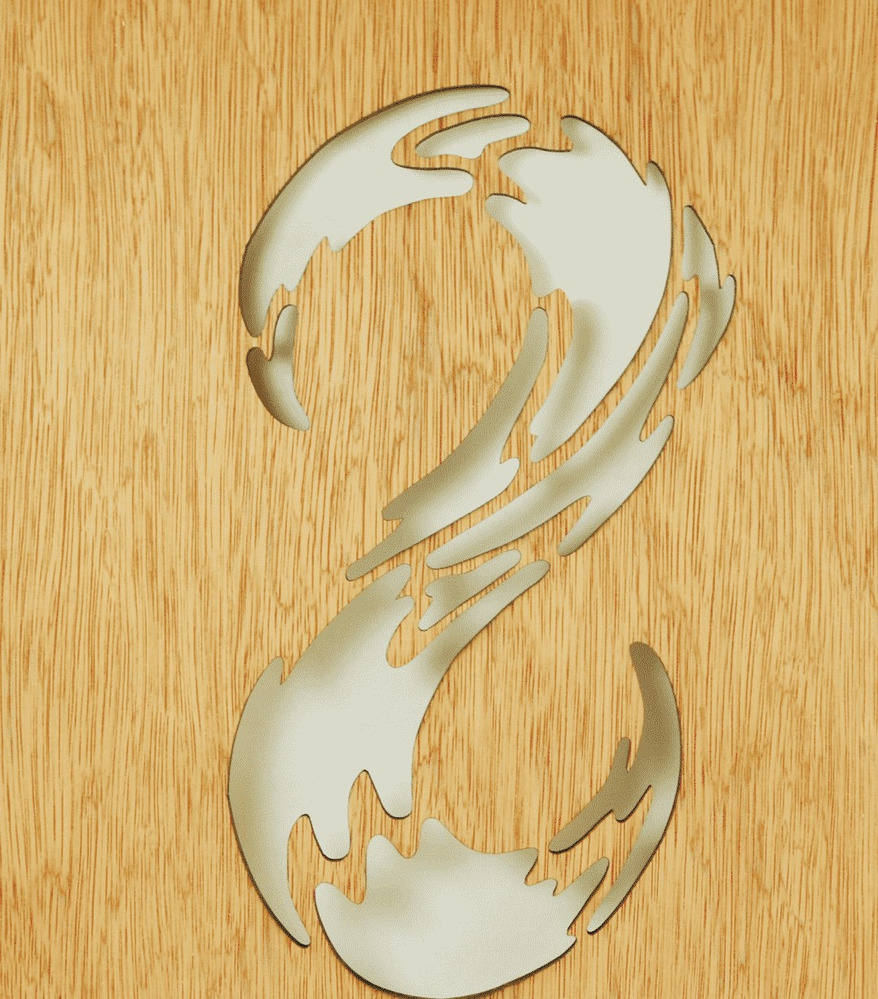Laser Cutting Vs. Waterjet Cutting
Share:
Two major cutting process manufacturers commonly use when cutting material include laser cutting and water jet cutting. Depending on the type of material used and the desired end result, one of these two methods may be appropriate for a given application. First, it is helpful to examine the fundamental differences between the processes and the materials they work well with.

Image credit: Accubeam
Laser Cutting
A laser cutter relies on a gas laser, such as a CO2 laser, for energy. The CO2 is then transmitted through a beam, which is guided by mirrors, and directed at the material. With CO2 lasers, the laser source is located inside the machine, and the beam can output between 1500 and 2600 Watts. Materials and applications, as well as precision and safety, are important factors to think about when considering laser cutting.
Materials and Applications
Laser cutters work well with a variety of materials including, plastic, glass, wood, and all metals, such as sheet metal laser cutting (except for reflective metals). If a material combination consists of materials with different melting points, however, it can be rather difficult to cut. Sandwich structures with cavities cannot be cut at all using a CO2 laser, and materials with limited access prove difficult as well. 3D material cutting is also hard to manage because of the rigid beam guidance.
Laser cutters do well with materials that range between 0.12 in and 0.4 in thickness and are commonly used to cut flat sheets of medium thickness steel. Typically, a CO2 laser cutter performs cutting, welding, drilling, engraving, ablation, and structuring.
Precision and Safety
Precision is not an issue with laser cutting, with the minimum size of the cutting slit reaching 0.006 in, depending on the speed of the laser. Thinner workpieces may suffer from gas pressure if the proper distance cannot be maintained, and partial burring does occur. Deformation and minor structural changes can occur as a result of thermal stress, and the cut material will appear striated.
Although safety goggles are not always necessary, laser cutting does produce smoke and dust, and some plastics and metals may produce toxic fumes—proper ventilation is critical. The overall risk involved in working with laser cutting machines is very low, as is the amount of waste produced and subsequent cleanup.
Water Jet Cutting
Unlike laser cutters, water jet cutters use pressurized water to cut material. To increase cutting ability, abrasives such as garnets and aluminum oxide are often added. The overall process mimics erosion in nature, just at a much higher speed and concentration: a high-pressure pump drives the water through rigid hoses, resulting in a forceful water jet—a typical water jet can output between 4 to 7 kilowatts. Unlike a laser cutter, where the laser source is located inside the machine, the work area and pump are often separate.
Material and Applications
Water jets can cut virtually any material including combination materials—with combination materials. However, water jets pose the threat of delamination. They can sometimes handle 3D material cutting, and exhibit limited ability with sandwich structures and cavities. Cutting materials with limited access is possible but difficult.
Water jets usually perform cutting, ablation, and structuring, specifically with materials like stone, ceramics, and thick metals. Materials that range in thickness from 0.4 to 2 in benefit from water jet cutting.
Precision and Safety
Waterjet cutting is not quite as precise as laser cutting, with a minimum cut size slit of .02”. Because of the high level of force used, thin, small, parts do not fare well and must be handled carefully. Although thermal stress is not an issue and burring doesn’t occur in the cut, the surface of the material will appear sand-blasted as a result of the added abrasive to the water-jet, and goggles should be worn to protect the eyes and face. The waterjet cutting process is quite noisy, and requires a significant amount of clean up—large amounts of waste occur as a result of the mixed water and abrasive.
Other Cutting Articles
- Mechanical Cutting vs. Laser Cutting vs. Milling
- Understanding Rotary Die Cutting
- Types of Die Cutting Operations
- Understanding Plasma Arc Cutting
- Forming Die Cutting Tools
- Top Laser Cutting Service Suppliers in the USA
- Types of Cutting Tools
- Top Die Cutting Service and Die Cutting Machinery Suppliers in the USA
- Introduction to Flatbed Die Cutting
- Understanding Die Cutting
- Understanding Laser Cutting
- Laser Cutting Steel and Aluminum



